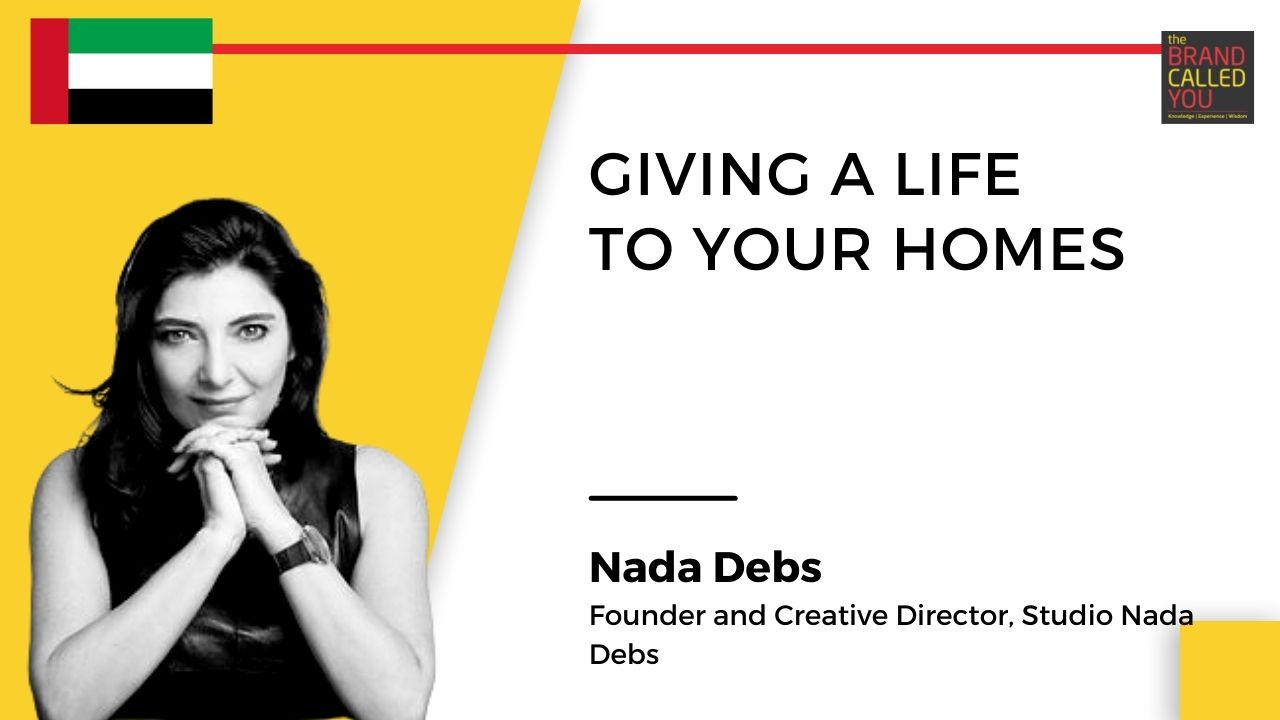Nada Debs, Founder and Creative Director, Studio Nada Debs
Nada Debs is a Lebanese designer living and working in Beirut. Her work spans scale and
discipline: from product and furniture design to one-off commissions across craft, art, fashion and interiors.
Podcast
Overview
Incorporating Japanese Art into large-sized Middle Eastern homes
Nada states that when it comes to furniture design, it is about conceptual thinking and the way people approach the design and not about the size of the house. She explains that the Japanese people believe that less is more. They take an idea, remove all unnecessary things from it keeping things minimal and then beautifully execute it on the furniture, whereas, in the Middle Eastern countries, the furniture designs are based more on repetitive geometry. Nada incorporated that repetitive geometry in a very minimalist simple form to create new designs that suit them. She also tells us that the furniture she designs is lighter and worldly because it’s not pure middle eastern just like she is.
This episode of The Brand Called You brings you a very accomplished designer Nada Debs. Nada primarily started her career with Furniture Designing, but she also does jewelry designing artworks, carpets designing, etc. Nada was born and brought up in Japan. After completing her high school in Japan she went to Rhode Island, US for further studies. She is currently working in Dubai.
Nada shares that her family moved from Lebanon to Japan in 1917. She was also born and brought up in Japan, but she always had a desire to return to her roots, which she did. She is currently residing in Lebanon. When she went there she realized that furniture design is not popular among them. They did not have a regional furniture design so she started to design furniture there. She incorporated Japanese aesthetics into the middle eastern craft.
How does Nada distill culture and craftsmanship to create pieces of emotional resonance?
Nada believes that design is not just about looking good, it should also feel good. She mentions when someone is cooking for the person they love, the food tastes even better because they have put their love in it, the energy is good. Likewise, when the craftsmen make a piece of furniture, they also put their emotions and energy in it to make it feel good.
How does culture impact the designs of the furniture?
In Nada’s opinion, beauty in a region is related to how they see God. In Japan, people reach out to God by meditation. They have a very silent and simple way to it. So they prefer designs that are minimal and pure. In middle eastern countries, mainly in the Islamic world, have a repetition of geometry for their designs.
Other artworks by Nada Debs
Nada believes that if you have a design philosophy, it can be applied anywhere. Nada apart from being a furniture designer, designs jewelry, carpets, and other artworks too. She also works for private commissions.
Where does Nada get the motivation to come up with new ideas for the design?
Nada tells us that the designs are influenced by many things. Majorly it depends upon what the customer needs. So the more people she meets, the more ideas she gets. She further tells us that she also gets inspired by her craftsmen and her artisans.
What are the expectations of Gen Zs in the designs?
Nada tells us that she is currently studying Gen Z behavior. She likes this generation as they question things. She believes that the millennial generation is a bit spoiled and they do not question it. Gen Z looks at things on social media and tries to find their source, question whether this thing is sustainable or not then buy it. This behavior inspires Nada too.
Profile
WHO IS NADA? Nada Debs is a Lebanese designer living and working in Beirut. Her work spans scale and discipline: from product and furniture design to one-off commissions across craft, art, fashion, and interiors. What ties her work together is her ability to distill culture and craftsmanship to create pieces of emotional resonance. Nada grew up in Japan, studied design at the Rhode Island School of Design in the United States, and has spent significant periods of time living and traveling the world, finding connections between different cultures. There is something of each of her experiences in all of her work. In essence, she captures the power of the human hand to tell stories that touch the heart. She calls her approach: handmade and heart-made. WHAT DOES NADA DO? Nada leads a team of 20 designers in Gemmayze. They work across disciplines together, engaging and connecting suitable suppliers and craftsmen to ensure every client’s needs aren’t just met, but exceeded. The studio’s services include (but are not limited to) the following: Annual collections of furniture and product sold online and stocked in key global retailers Customized variations of her permanent collections to order Bespoke commissions of furniture and accessories Collaborations with global furniture manufacturers Full interior design concepts and services Artwork, installations and jewelry commissions Corporate gifts WHAT ARE NADA’S VALUES? Nada believes in the importance of human stories. She places value on connections – to places, to others, and to our own identity within the wider world. She is fascinated by the role of the human hand to tell stories and evoke a sense of belonging. She describes her belief in the craft as a feeling that goes beyond geography, language, and culture. Geometry is an important tool for Nada, representing complex philosophies with intricate, simple beauty. She uses materials to tell tactile stories, sometimes in pure and surprising forms, and sometimes with intriguing combinations and juxtapositions. What connects her work is a belief in the power of design to cross time and border and touch us on a primal level. She believes not just in form and function, but in feeling too. WHAT IS NADA’S APPROACH? Nada brings her philosophy to life in a number of ways. Her experience as a designer gives her the language to understand how things are made and how they can be made special. She has a hands on, human approach, understanding that good relationships and a collaborative attitude are the keys to achieving good results. She brings passion to process; she combines ideas, skills, and techniques together from her travels, to form a unique cultural exchange. Her mission is more than simply the nostalgic preservation of time-honored traditions, it is to translate the traditional into something energetic and alive.


